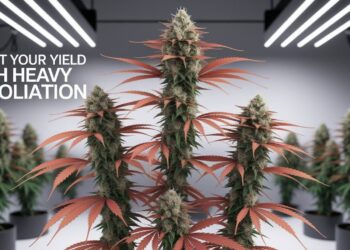Harvest timing can make or break your entire cannabis growth. Cut too early, and you lose potency. Wait too long, and you risk heavy, sedating effects you didn’t want.
The key? Trichomes. Those tiny, crystal-like structures on your buds hold the secret. While many growers guess their harvest window, trichome color tells the real story, revealing peak THC levels and the effects you’ll get.
In this guide, you’ll learn how to read trichomes like a pro. We’ll break down the color stages, show you which tools to use, and help you avoid common mistakes that can compromise quality.
This isn’t a theory. These are proven methods from experienced growers who’ve already learned the hard way, so you don’t have to.
By the end, you’ll know exactly when to harvest for the results you want. Your plants are talking. Let’s show you how to listen.
Understanding Cannabis Trichomes and Their Role in Harvest Quality
Cannabis trichomes contain the plant’s most valuable compounds. Understanding their development determines your harvest timing and final product quality.
What Are Trichomes?
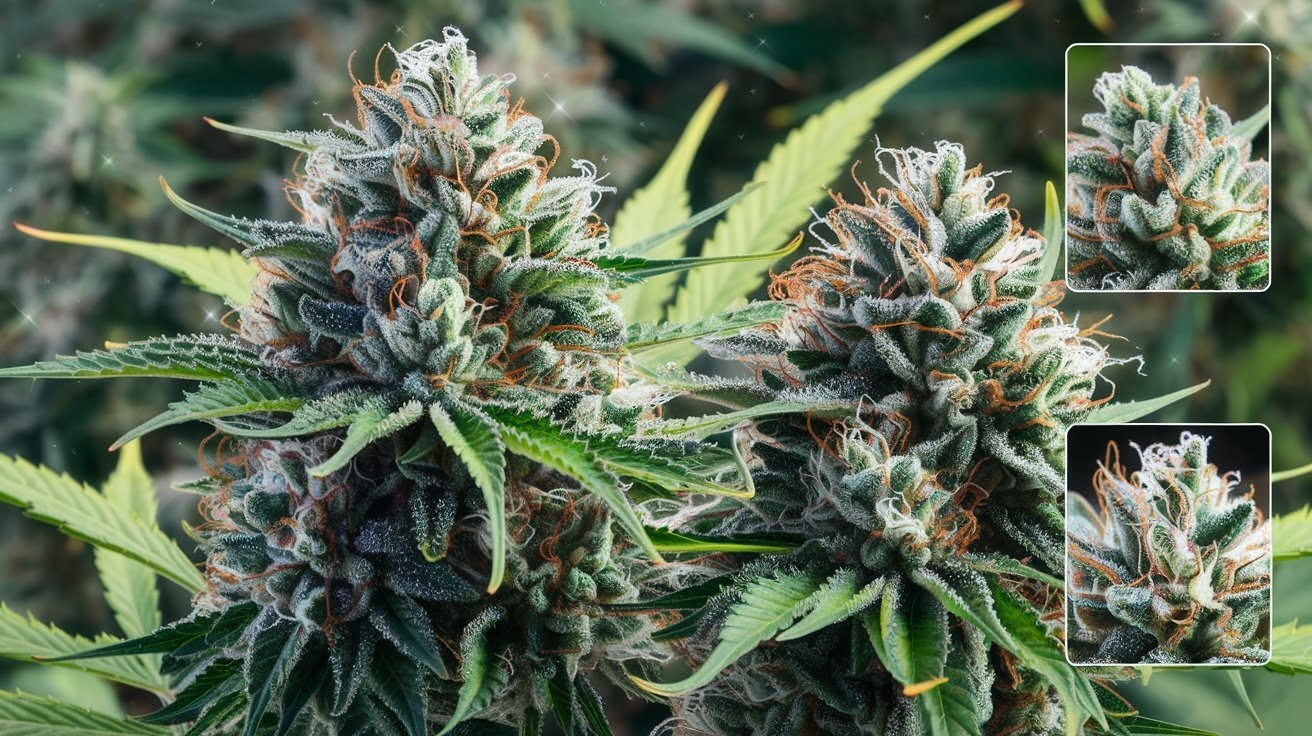
Look closely at your cannabis buds. See those tiny crystals covering the surface? Those are trichomes. These microscopic structures look like little mushrooms under a magnifying glass.
They have stalks with round heads on top. Most measure between 10 and 500 micrometers, which is smaller than the width of a human hair. Here’s what makes them crucial: Trichomes produce your THC and CBD. They also create the terpenes that give your cannabis its smell and flavor.
Think of trichomes as tiny factories. Each one works around the clock, producing the compounds you need for your final product. Your plant grows trichomes as protection. They help defend against insects, UV rays, and other threats. But for us growers, they’re gold mines of potency.
Three Types of Trichomes (Brief Overview)
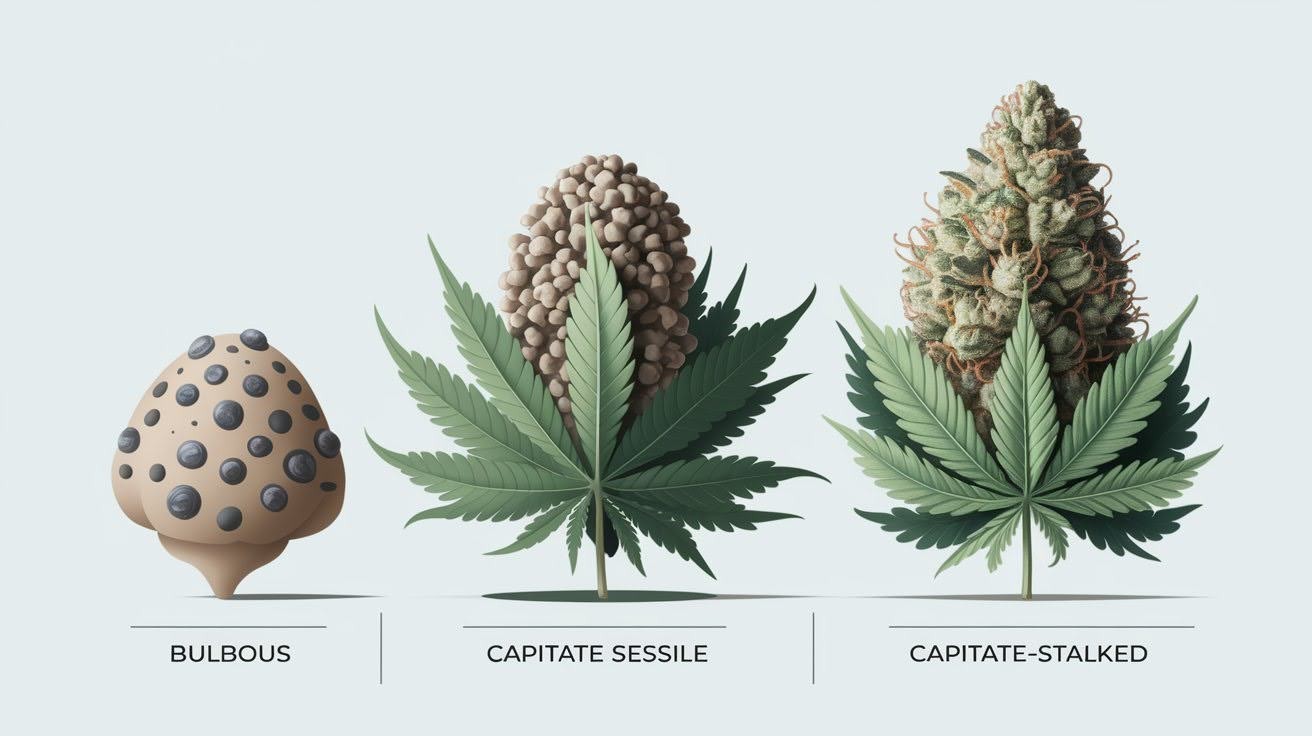
Not all trichomes are created equal. I focus on three main types:
- Bulbous trichomes are the smallest. They don’t produce much in terms of cannabinoids.
- Capitate sessile trichomes sit in the middle. They’re bigger and make moderate amounts of good stuff.
- Capitate-stalked trichomes are what you care about. These are the largest and produce the most THC and CBD. When timing your harvest, consider these key factors.
The Four Critical Stages of Trichome Development
Trichomes pass through four distinct stages during cannabis maturation. Each phase signals different potency levels and optimal harvest windows.
Stage 1 – Clear Trichomes (Immature Stage)
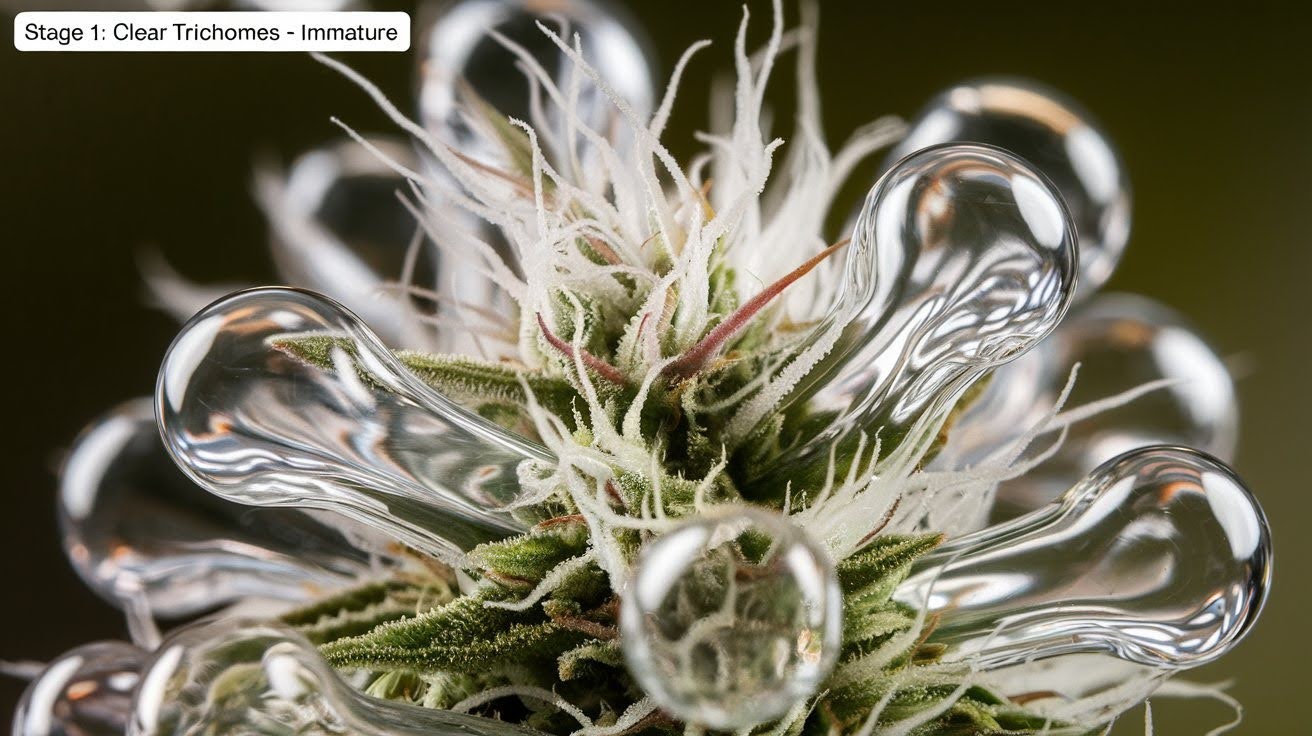
Don’t harvest yet. When your trichomes appear as clear glass, your plant isn’t yet ready. Under a magnifying glass, these trichomes appear completely see-through. They look like tiny water droplets sitting on your buds.
The THC levels are still way too low at this point. Your plant is still building up cannabinoids inside each trichome head. What happens if you harvest now? You’ll get weak, disappointing results.
Some growers report headaches and jittery feelings from clear trichome harvests.
Wait it out. Your patience will pay off in the next stage.
Stage 2 – Cloudy/Milky Trichomes (Peak Potency Stage)
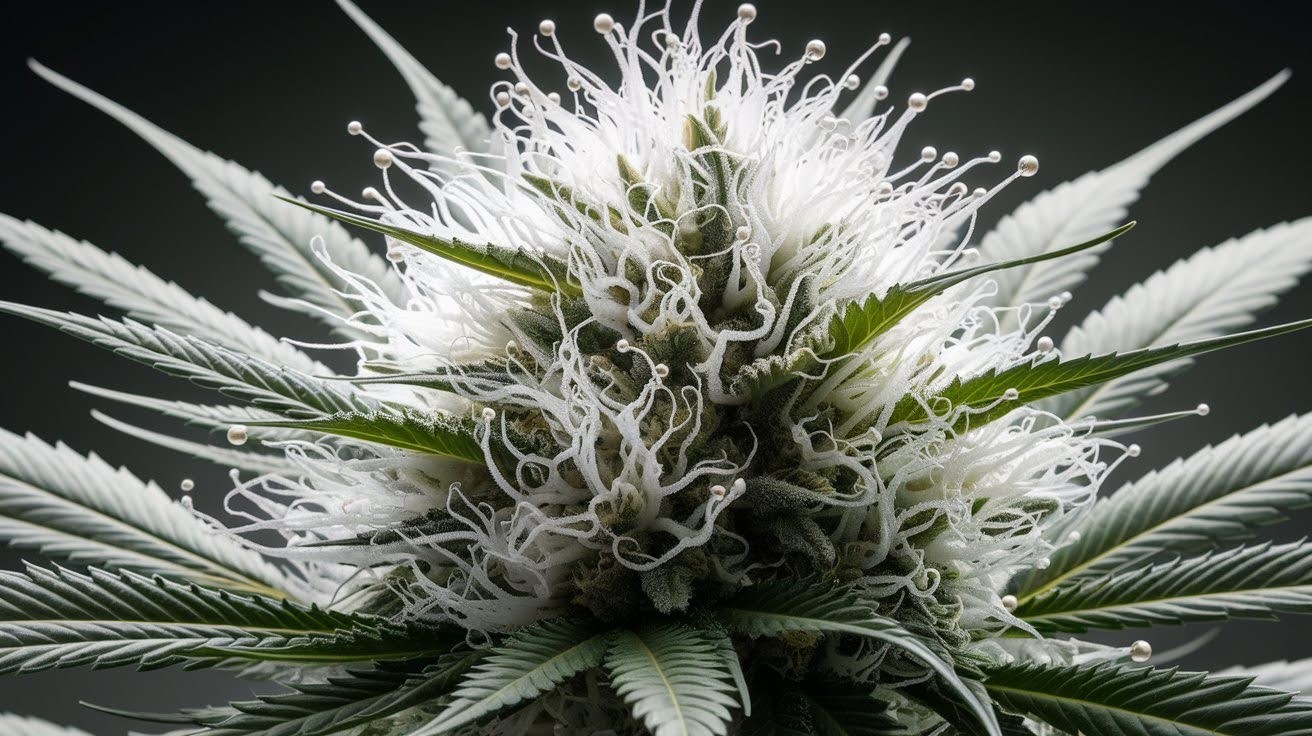
This is where the magic happens. Your trichomes turn milky white and lose their transparency. They look like tiny clouds under magnification.
Maximum THC production occurs during this stage. CBD levels remain minimal, allowing you to experience the uplifting and energizing effects that most people desire. Perfect timing for sativa strains or when you want daytime cannabis that won’t put you to sleep.
Here’s the good news: this stage lasts about two weeks. You don’t have to watch your plants every single day, worrying about missing the window of opportunity. But here’s what I learned the hard way – document everything.
Take photos of your trichomes daily during this period. Weather changes and stress can accelerate development more quickly than expected. Most commercial growers target this exact stage for their harvest.
Stage 3 – Amber Trichomes (Degradation Stage)
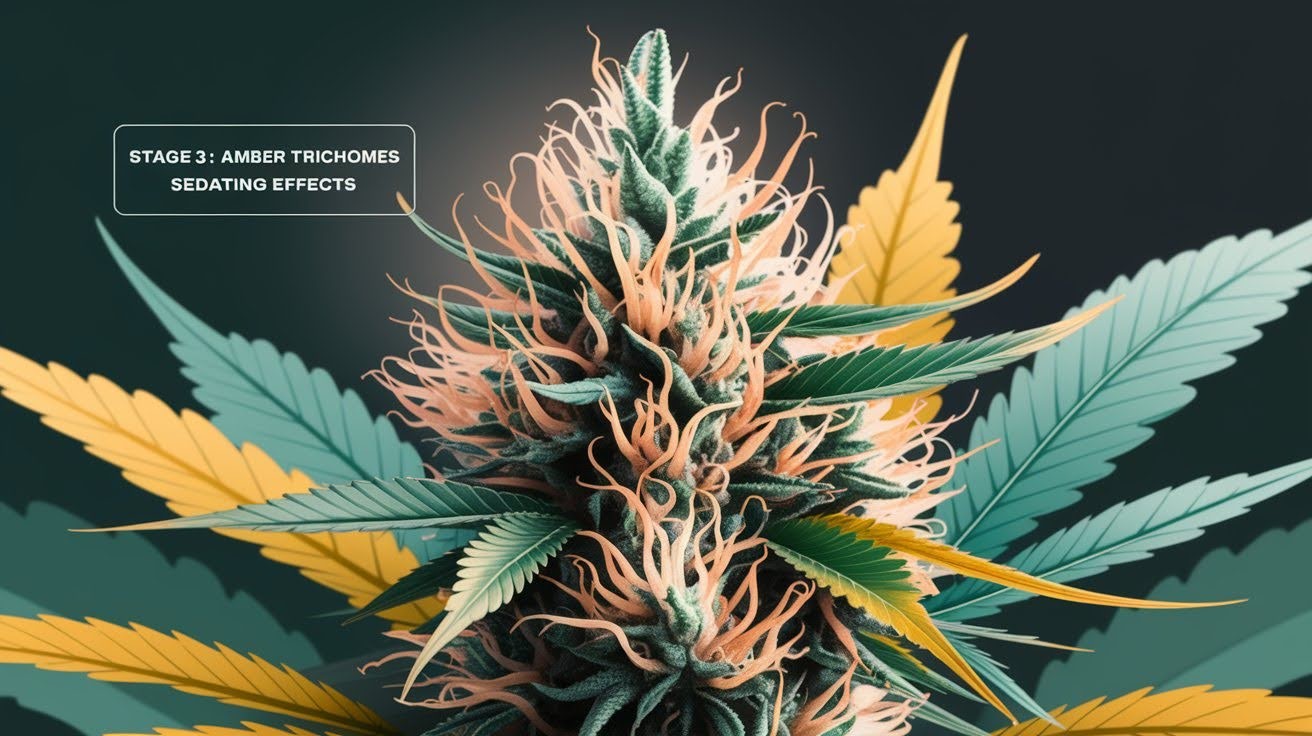
Your THC is breaking down. When trichomes turn amber or brown, the chemistry inside your buds changes. THC converts into CBN, a compound that induces sleepiness and relaxation. CBD levels also increase during this stage.
This creates those heavy, sedating effects people call “couchlock.” Your body feels weighted down, and your mind gets foggy. Perfect for indica strains and medical users dealing with pain or insomnia. Nighttime cannabis works best with amber trichomes.
But watch closely. Too much amber ruins everything. Once the trichomes transition from golden amber to dark brown, you’ve waited too long. I check my plants twice daily during this stage. The change happens faster than you think.
Stage 4 – Mixed Trichomes (Balanced Effects)
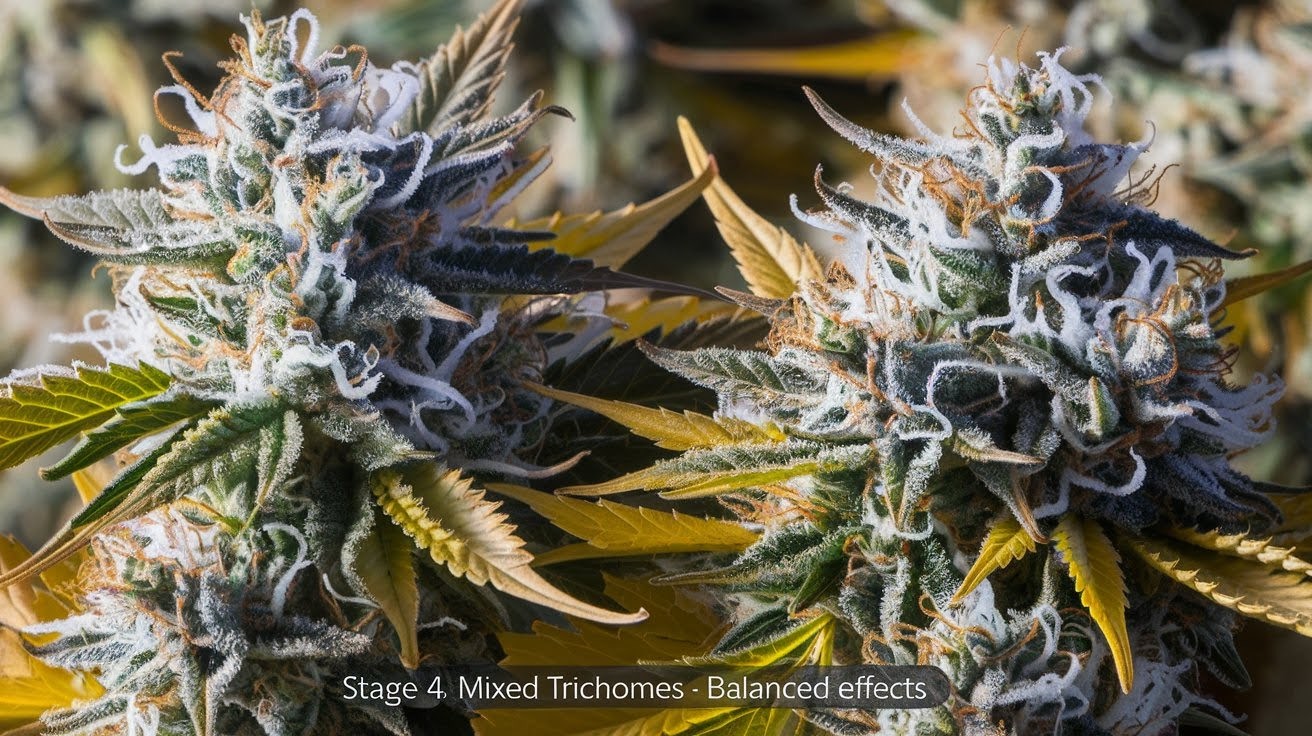
Most experienced growers don’t harvest at just one stage of growth. Mixing trichome colors gives you balanced effects. Here’s what works:
Sativa-dominant hybrids – I go for 70% cloudy, 30% amber. This maintains the energy while promoting relaxation. Indica-dominant hybrids require a minimum of 60% indica genetics. More amber means better sleep medicine.
Balanced effects come from a 50/50 split. Half cloudy, half amber trichomes. My personal preference? 70% cloudy, 30% amber works for almost everything. You get peak potency with enough relaxation to balance things out.
Count trichomes across multiple bud sites. Don’t just look at one cola – different parts of your plant mature at different rates. This mixed approach gives you versatile cannabis that works morning or evening.
How to Properly Monitor Trichome Development?
Monitoring trichome changes requires the right tools and techniques. These methods help you track development for perfect harvest timing.
Essential Inspection Tools
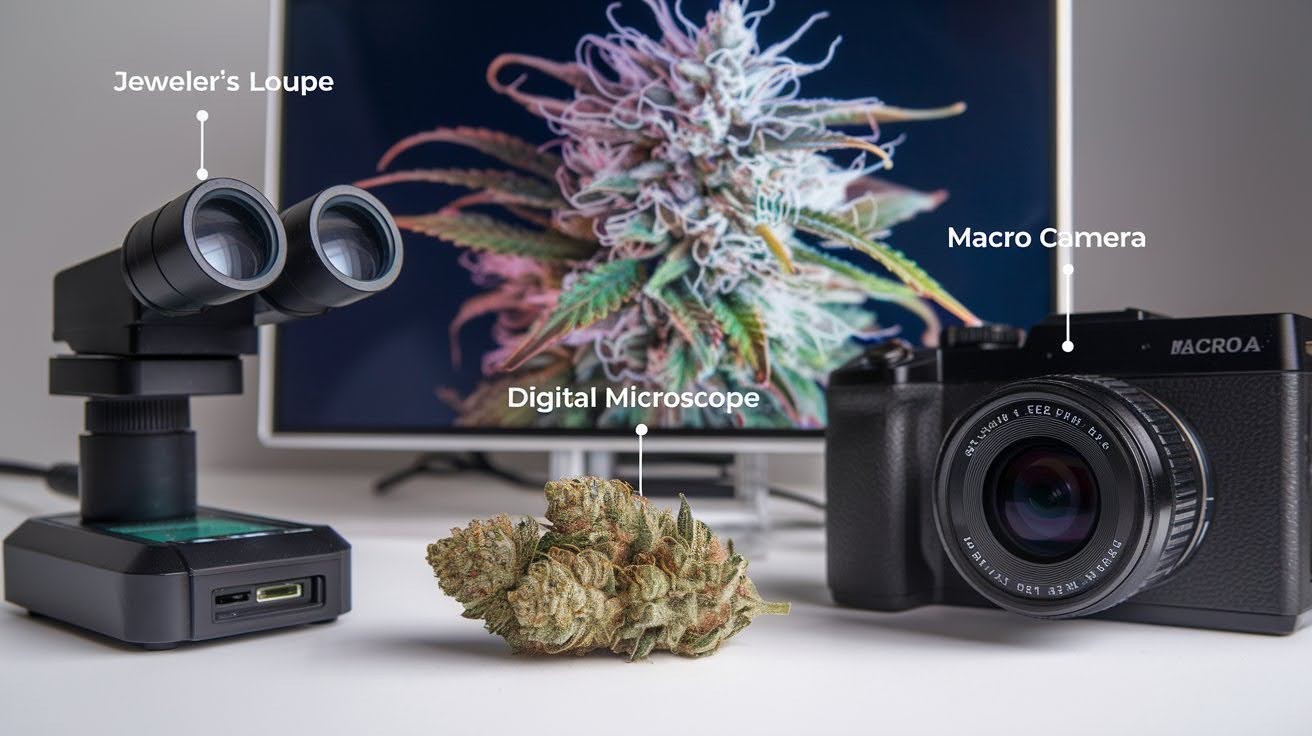
You can’t see trichomes with your naked eyes. You need magnification to make smart harvest decisions. Jeweler’s loupe is my go-to tool. Get 30x to 60x magnification. They’re inexpensive, portable, and durable. I keep one in my pocket during harvest season.
Digital microscopes are more expensive but provide crystal-clear images. The 30x to 120x range works perfectly. Plus, you can take photos to track changes over time. HD digital cameras help document everything. I take daily photos to compare the changes in trichomes. This creates a visual timeline of development.
Inspection Techniques

Focus on the large trichomes, the capitate-stalked ones on your buds. Skip the tiny ones on leaves. Check multiple bud sites across your plant. Top colas mature differently from lower branches. Don’t rely on just one spot.
During the critical window, I inspect several times daily. Trichomes change fast when they’re ready. Lighting matters big time. Natural sunlight shows true colors. Indoor lights can make amber look cloudy or vice versa.
Try this trick: clip a small leaf and examine it under your microscope indoors. Less plant movement means clearer viewing.
Using Trichome Development Charts
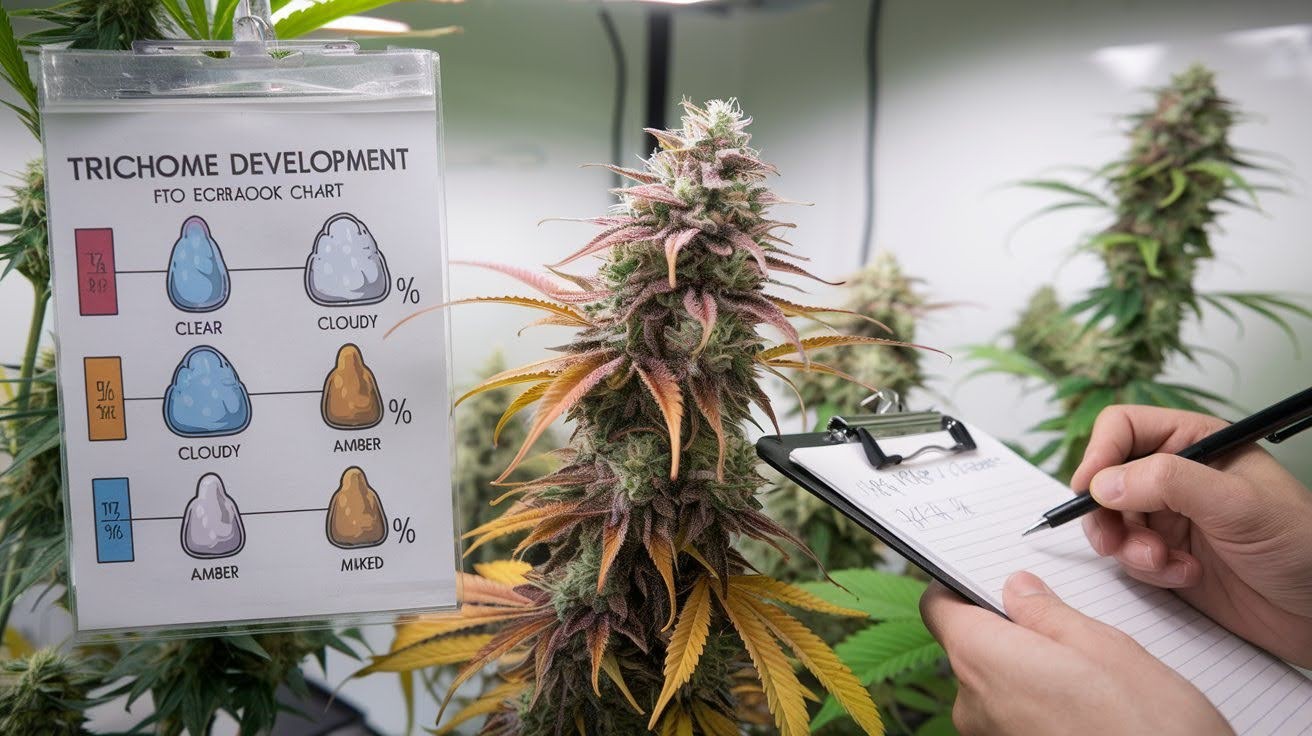
Visual guides save time and reduce mistakes. Print out trichome color charts and keep them near your plants. Track the color progression from clear to cloudy to amber. Write down percentages daily.
Document everything for future growth. Your notes become your harvest bible. Each strain behaves differently, and your records help you nail the timing next season.
Environmental Factors That Affect Trichome Stage Development
Light, temperature, humidity, and nutrients directly influence trichome development speed and quality. Control these factors for optimal resin production.
Light Requirements
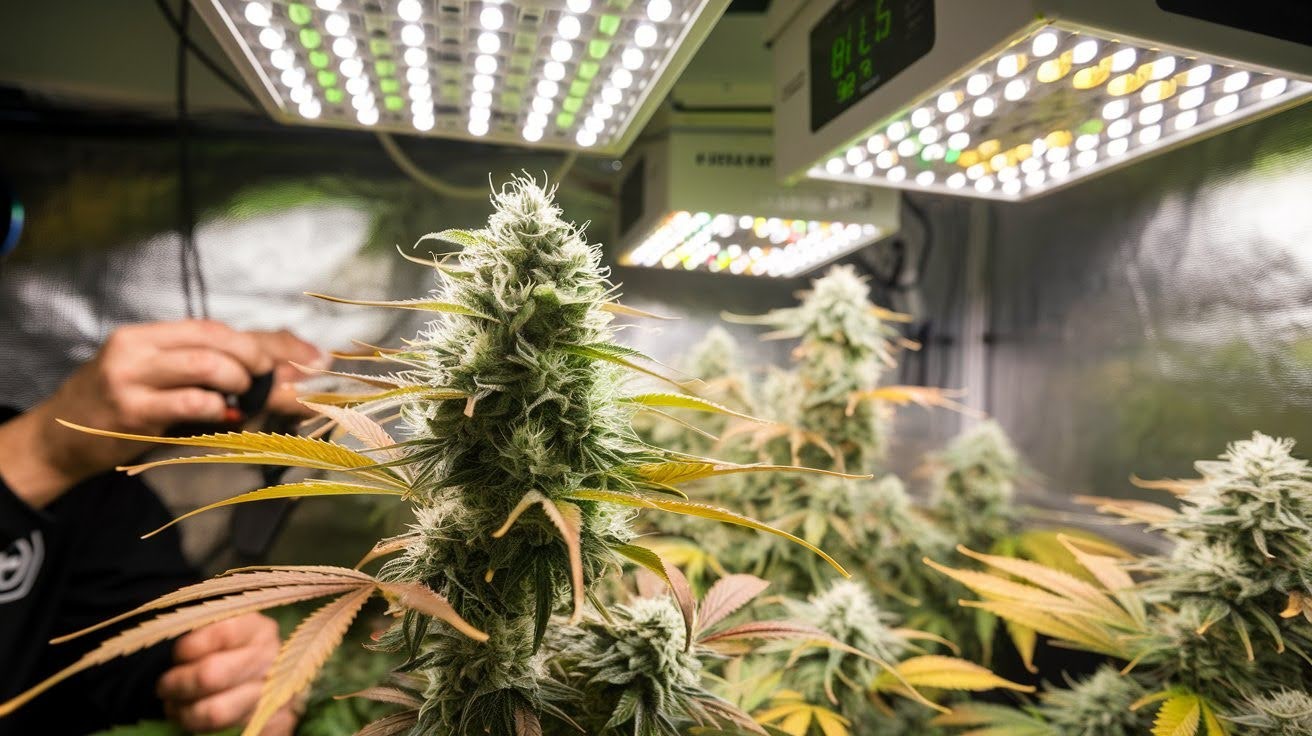
Your lights control trichome timing. Full-spectrum lighting enables trichomes to mature faster than with bare bulbs. UV-B light is special. It triggers your plant to produce more trichomes as a form of protection. Think of it as controlled stress that boosts production.
Light intensity matters too. Too weak and development slows down. Too strong and you might rush past the cloudy stage before you notice. I adjust my lights during the final weeks based on what I see through my loupe.
Temperature and Humidity Impact
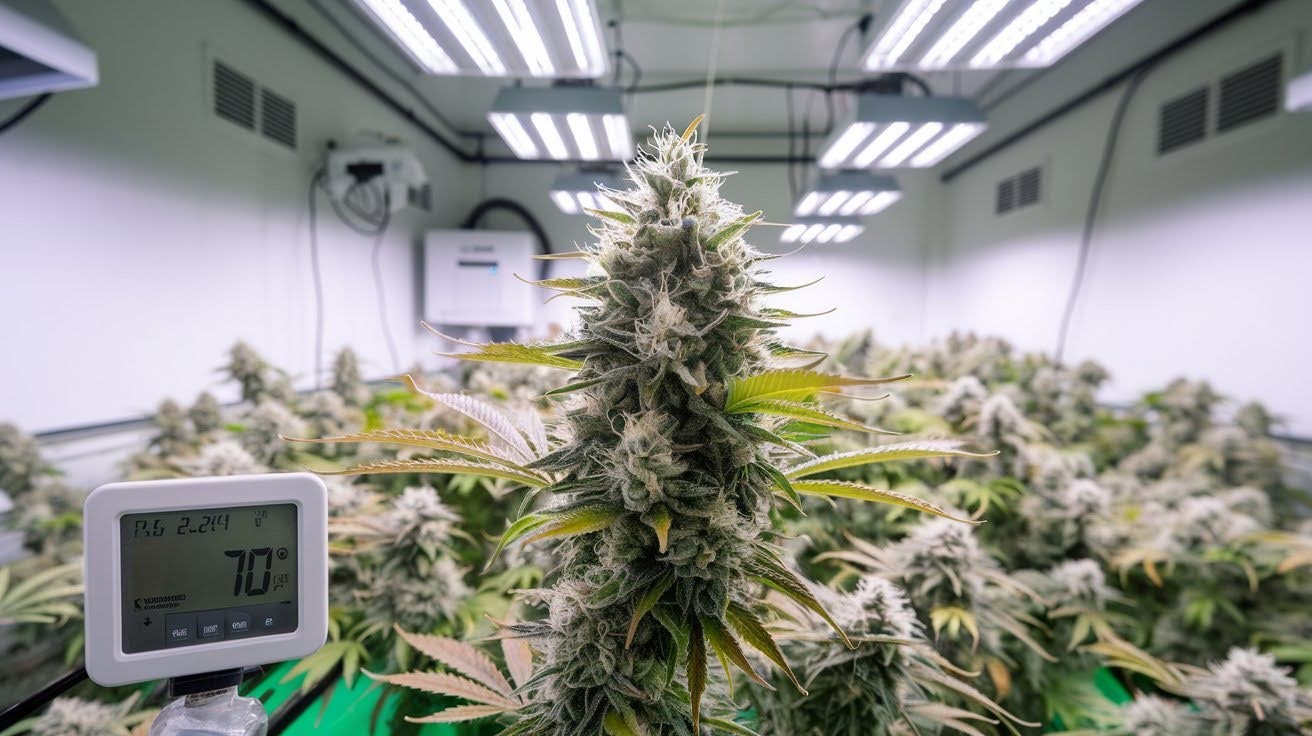
Keep your flowering room between 68-77°F. This range supports healthy trichome development without stressing your plants. Humidity should remain between 40% and 60% during most of the flowering period. Too high causes mold. Too low makes trichomes develop unevenly.
Here’s a pro trick: lower both temperature and humidity in the final two weeks. This can encourage more trichomes to develop amber faster. Cool nights and dry air signal to your plant that winter is coming. Your trichomes respond by changing their chemistry more quickly.
Monitor closely when you make these changes.
Harvest Timing Strategies Based on Trichome Stages
Different trichome stages produce varying effects and potency levels. Strategic timing based on development maximizes your desired cannabis experience.
Strain-Specific Guidelines
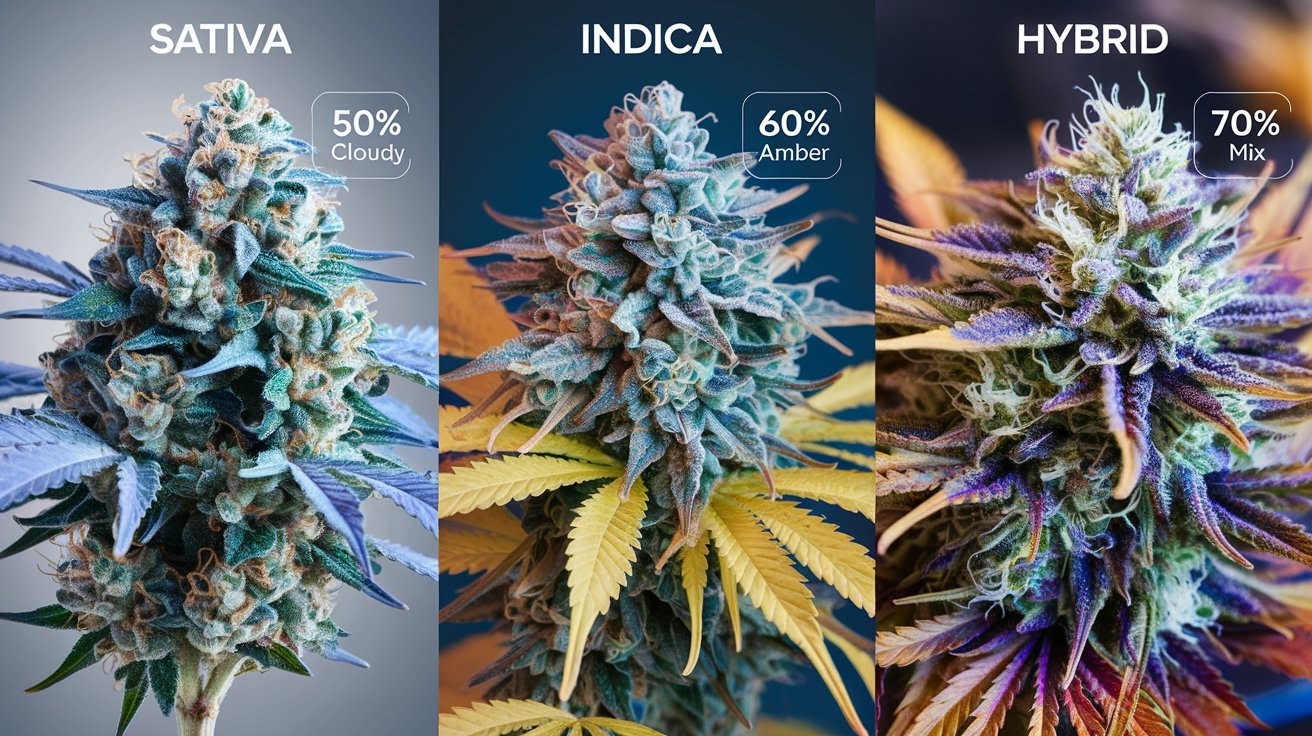
Sativa strains need different timing than indicas. Genetics determines how you should interpret those trichomes. Sativa strains work best at 50% cloudy trichomes. This gives you that energizing, head-high effect sativas are known for. Wait too long and you lose the uplifting qualities.
Indica strains should reach 60% amber before cutting. This maximizes the heavy, sedating effects that help with sleep and pain relief. Hybrid varieties give you flexibility. Lean toward the dominant genetics – more cloudy for sativa-dominant, more amber for indica-dominant plants.
Effect-Based Harvest Decisions
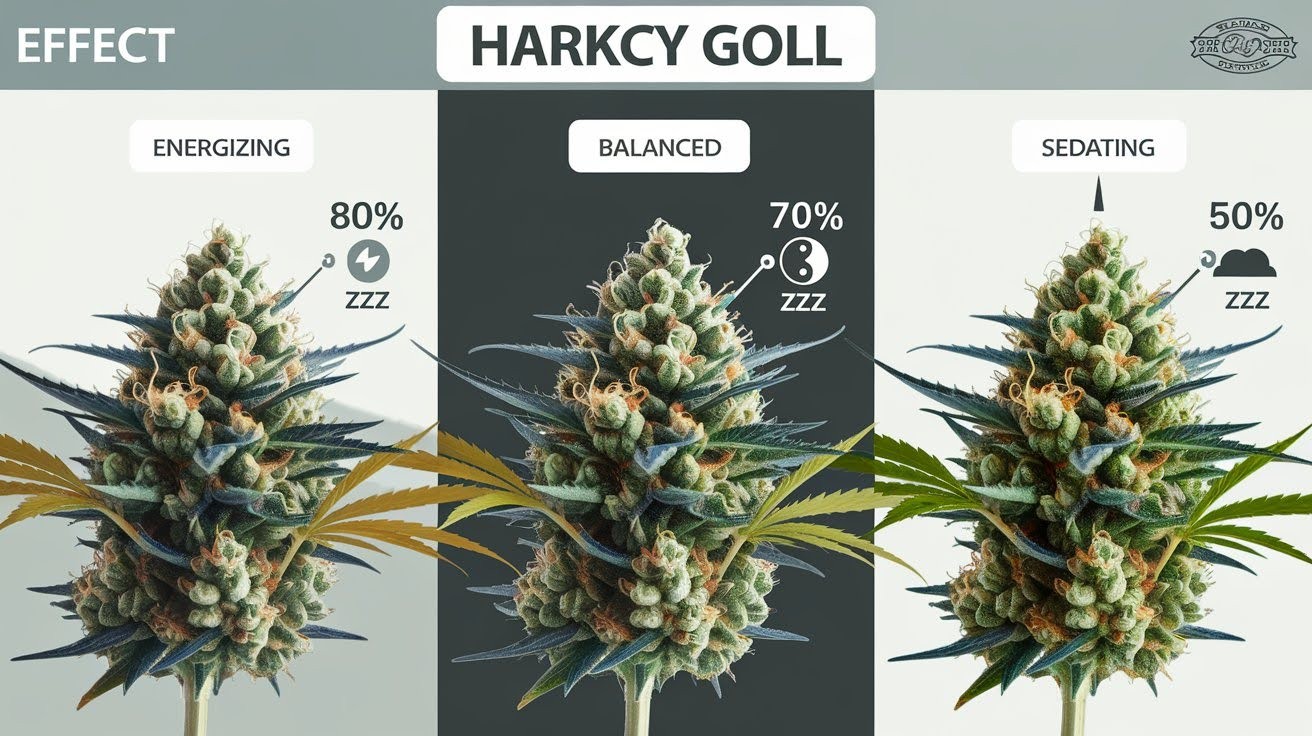
Match your trichomes to your goals. Different ratios create completely different experiences. Uplifting and energizing cannabis needs cloudy, primarily trichomes. I aim for 80% overcast and 20% clear skies for maximum mental clarity.
Balanced experience comes from 70% cloudy, 30% amber. This works for daytime or evening use without being too stimulating or sedating. Sedative and medical applications require higher amber percentages. Target a 50-60% amber setting when treating insomnia or chronic pain.
Progressive Harvesting Technique
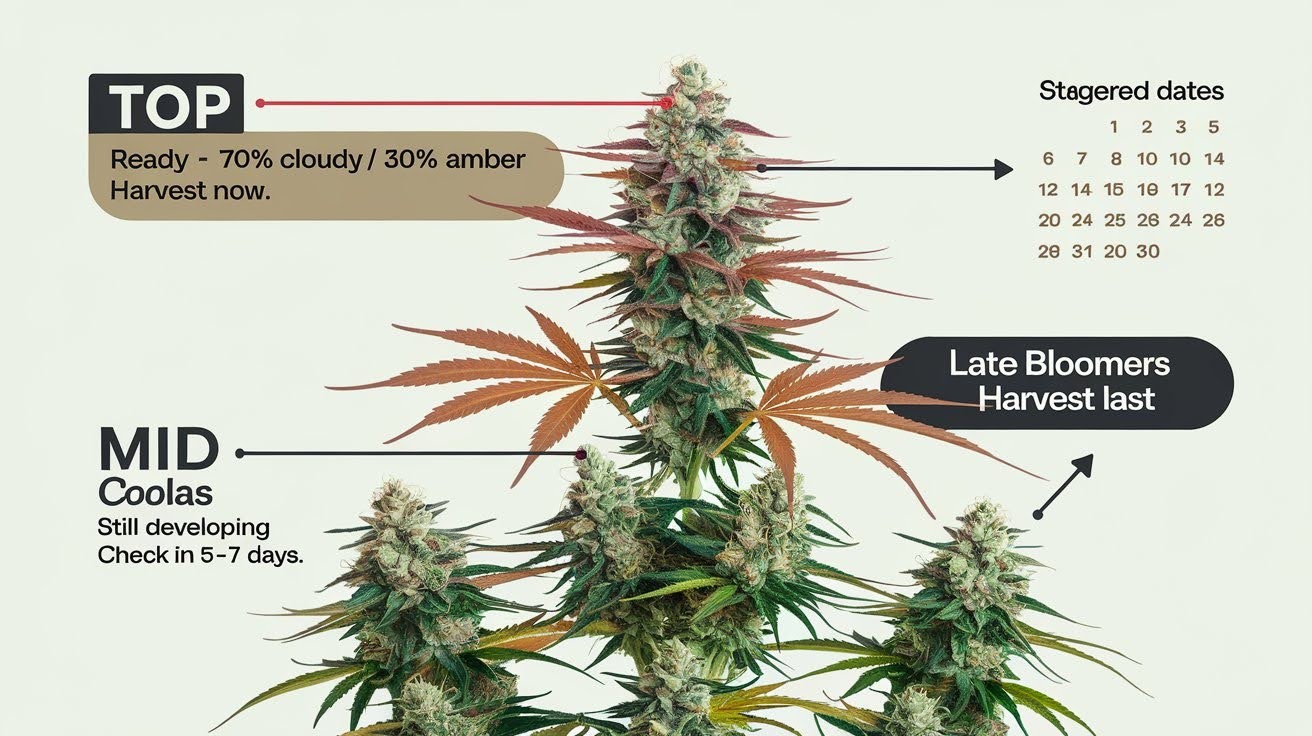
Don’t harvest everything at once. Your plant doesn’t mature evenly from top to bottom. Cut your top colas first when they hit your target trichome ratio. These finish fastest because they get the most light.
Leave lower buds for another week or two. They’ll continue developing and increase your total yield. This technique allows you to customize effects from the same plant, using top buds for energy and bottom buds for relaxation.
Reading Trichome Stages for Optimal Results
Accurate trichome reading determines harvest success and final product quality. Master these visual cues for consistently excellent cannabis results.
Key Visual Indicators
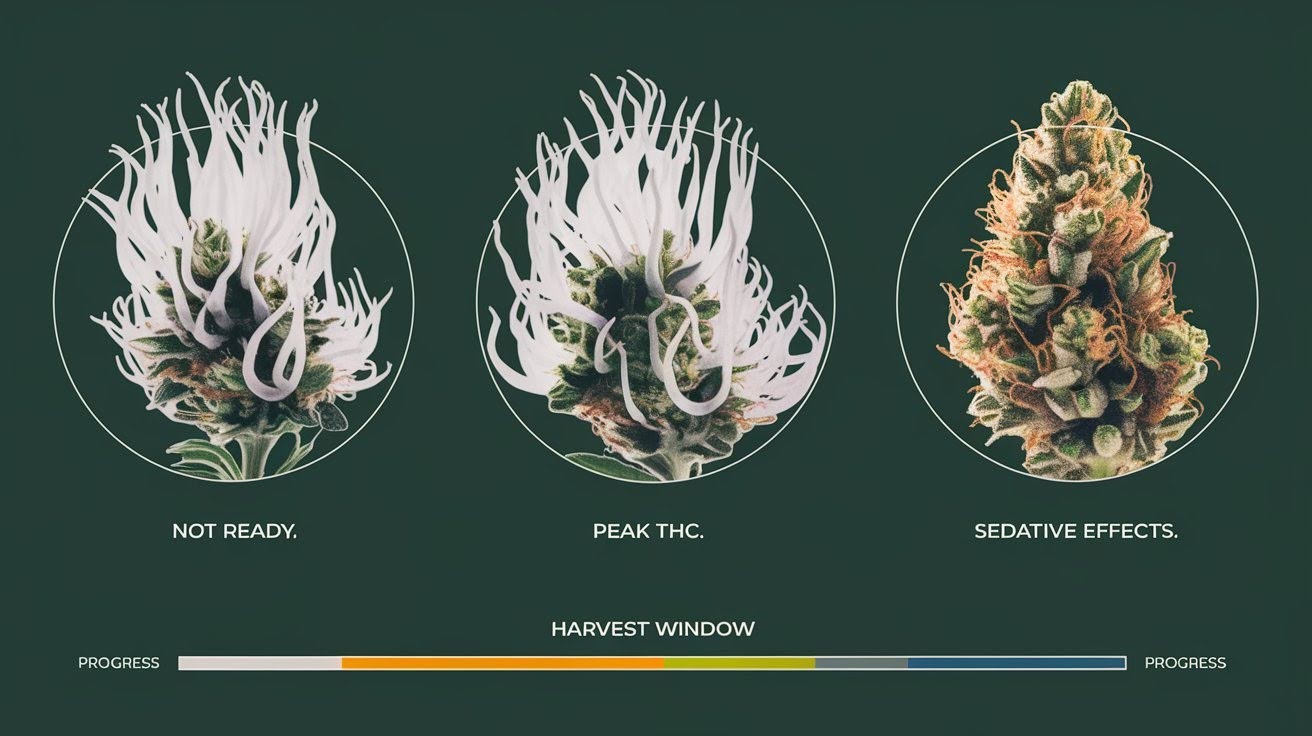
Clear trichomes mean wait. They appear to be glass under your magnifying glass. Your plant isn’t ready yet. Cloudy trichomes open your harvest window.
These milky white heads contain peak THC levels. This is when most growers should cut their plants. Amber trichomes signal CBN conversion. THC breaks down into compounds that make you sleepy.
Perfect for nighttime medicine. Mixed ratios give you control. Combine different stages to create the exact effects you want. Think of it like cooking – the right recipe creates the perfect result.
Timing Your Harvest Window
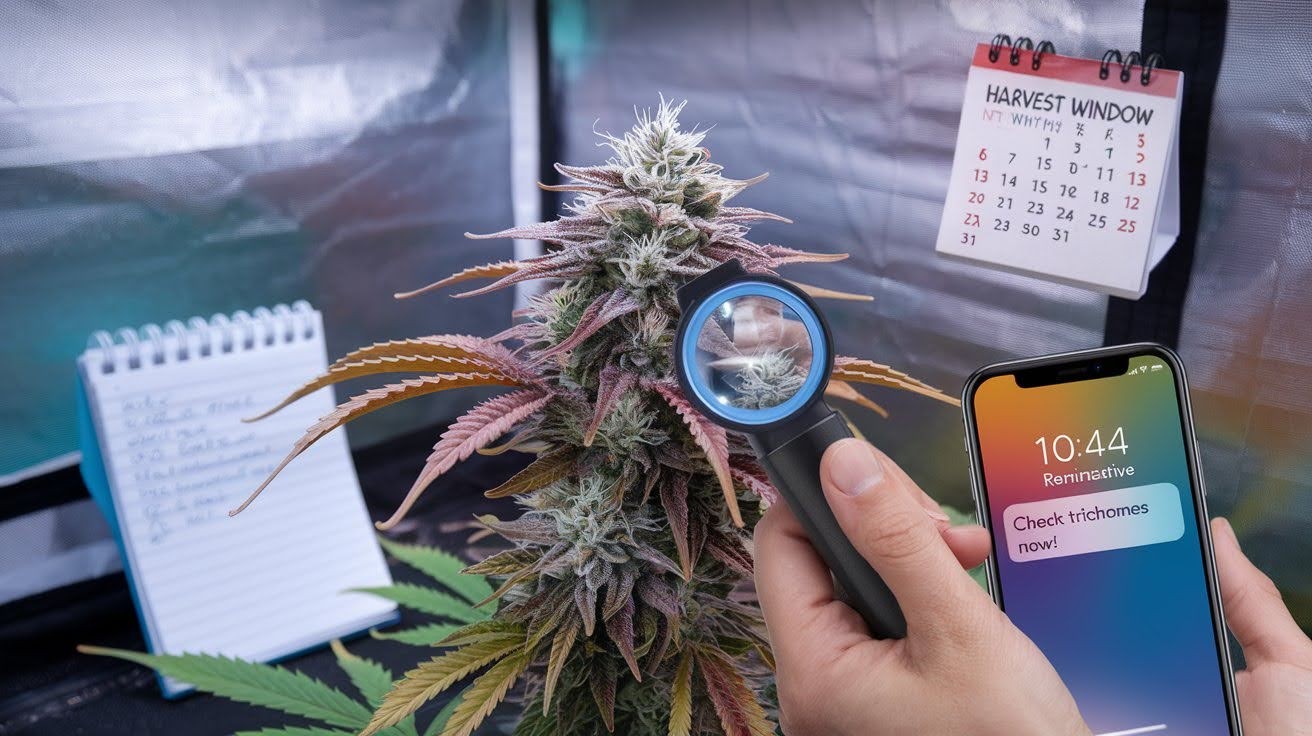
Check daily once you see cloudy trichomes appearing. Changes happen fast during this stage.
You typically have a 24-48 hour window for optimal harvest. Miss it, and your trichomes keep changing.
Write everything down. Document the exact ratios you harvested and how the final product turned out. This creates your harvest guide for future growth. Each strain behaves differently, and your notes become invaluable reference material.
Set phone reminders to check twice daily during the critical period.
Conclusion
Understanding cannabis trichome stages transforms you from guessing to knowing exactly when to harvest. You now have the tools and knowledge to read those tiny indicators like an expert.
Clear means wait. Cloudy means go. Amber means sedation. It’s that simple. Your days of wondering about harvest timing are now behind you.
With proper magnification and daily monitoring, you’ll consistently produce cannabis with the exact effects you want. Start checking your current plants today. Take photos, document your findings, and build your harvest database. Every strain teaches you something new.
Share your trichome photos in the comments below – I’d love to see how your plants are developing. Other growers also learn from your experiences. Happy growing, and remember: the trichomes always tell the truth about readiness.
Frequently Asked Questions
What are the main cannabis trichome stages?
The four main stages are clear (immature), cloudy/milky (peak THC), amber (sedative CBN), and mixed ratios for balanced effects.
When should I harvest based on trichome color?
Harvest when 70% cloudy and 30% amber for balanced effects, or adjust ratios based on desired outcomes – more cloudy for energy, more amber for relaxation.
How do I see cannabis trichome stages?
Use a jeweler’s loupe (magnification of 30x-60x) or a digital microscope. Check multiple bud sites in natural light for accurate color assessment.
How long do cannabis trichome stages last?
The cloudy stage lasts about two weeks. Monitor daily during this period, as amber conversion can happen quickly in the final days.
Do different strains require different timings for trichome harvest?
Yes. Sativas work best at 50% cloudy for energy, while indicas need 60% amber for maximum sedation. Adjust timing based on genetics.



